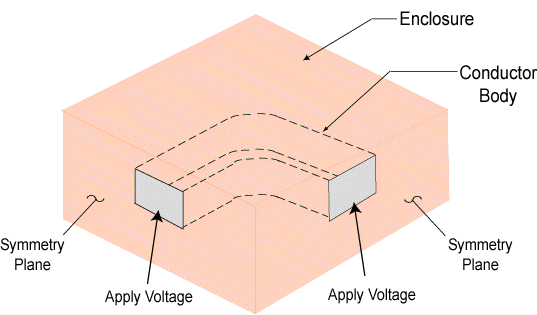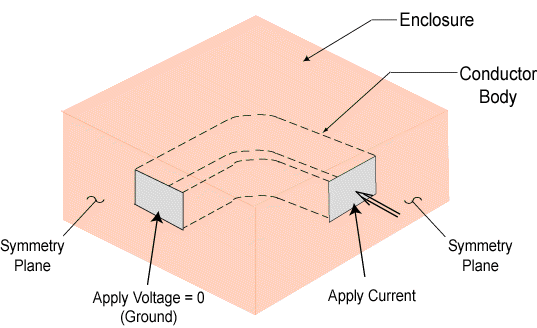This feature allows you to tag a solid body as a solid source conductor for modeling bus bars, rotor cages, etc. When assigned as a solid source conductor, additional options are exposed for applying electrical boundary conditions and excitations to the conductor. These include applying an electrical potential (voltage) or current.
To set this condition, right-click the Magnetostatic environment object in the tree and select Source Conductor from the Insert drop-down menu, or click the Source Conductor option from the Context tab. Select the body you want to designate as a conductor body, then use the Details pane to scope the body to the conductor and set Conductor Type to Solid. The default Number of Turns is 1, representing a true solid conductor.
A solid source conductor can be used to represent a stranded coil by setting the Number of Turns to > 1. The conductor still computes a current distribution according to the physics of a solid conductor, but in many cases the resulting current density distribution will not significantly affect the computed magnetic field results. This "shortcut" to modeling a stranded conductor allows you to circumvent the geometry restrictions imposed by the stranded conductor bodies and still obtain acceptable results.
After defining the conductor body, you may apply voltage and current conditions to arrive at the desired state.
Note: Conductors require two material properties: relative permeability and resistivity. They also must not terminate interior to the model with boundary conditions that would allow current to enter or exit the conductor. Termination points of a conductor may only exist on a plane of symmetry.


Only bodies can be scoped to a conductor. Solid conductor bodies must have at least one voltage excitation and either a second voltage excitation or a current excitation. Also, two solid conductor bodies may not 'touch' each other, that is, they must not share vertices, edges, or faces.
To establish current in the conductor, you must apply excitation to at least two locations on the conductor, typically at terminals. For example, you could:
apply a voltage drop at two terminals of a conductor body residing at symmetry planes.

ground one end of a conductor (set voltage to zero) and apply the net current at the terminal's other end.



